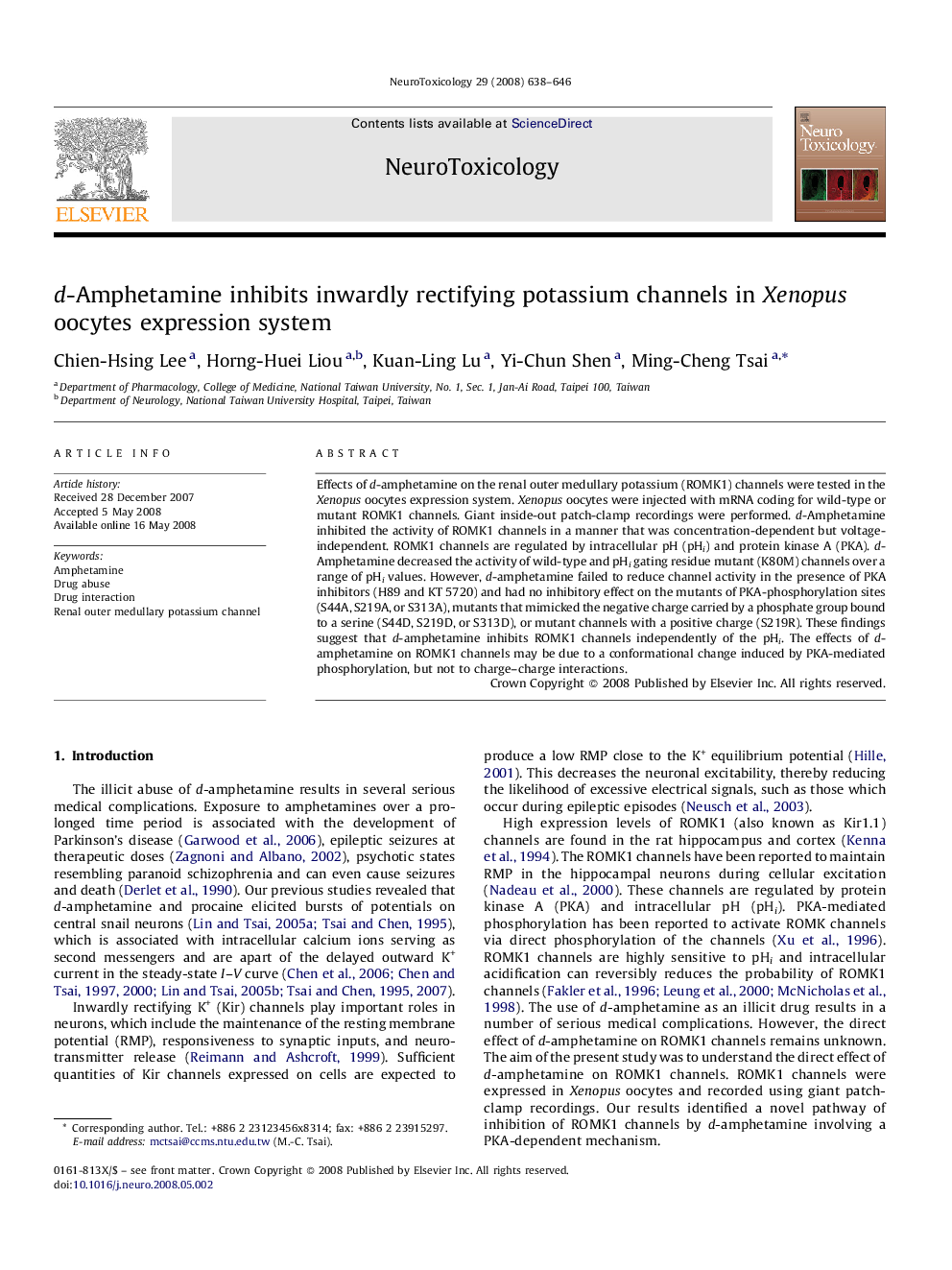| Article ID | Journal | Published Year | Pages | File Type |
|---|---|---|---|---|
| 2590320 | NeuroToxicology | 2008 | 9 Pages |
Effects of d-amphetamine on the renal outer medullary potassium (ROMK1) channels were tested in the Xenopus oocytes expression system. Xenopus oocytes were injected with mRNA coding for wild-type or mutant ROMK1 channels. Giant inside-out patch-clamp recordings were performed. d-Amphetamine inhibited the activity of ROMK1 channels in a manner that was concentration-dependent but voltage-independent. ROMK1 channels are regulated by intracellular pH (pHi) and protein kinase A (PKA). d-Amphetamine decreased the activity of wild-type and pHi gating residue mutant (K80M) channels over a range of pHi values. However, d-amphetamine failed to reduce channel activity in the presence of PKA inhibitors (H89 and KT 5720) and had no inhibitory effect on the mutants of PKA-phosphorylation sites (S44A, S219A, or S313A), mutants that mimicked the negative charge carried by a phosphate group bound to a serine (S44D, S219D, or S313D), or mutant channels with a positive charge (S219R). These findings suggest that d-amphetamine inhibits ROMK1 channels independently of the pHi. The effects of d-amphetamine on ROMK1 channels may be due to a conformational change induced by PKA-mediated phosphorylation, but not to charge–charge interactions.
